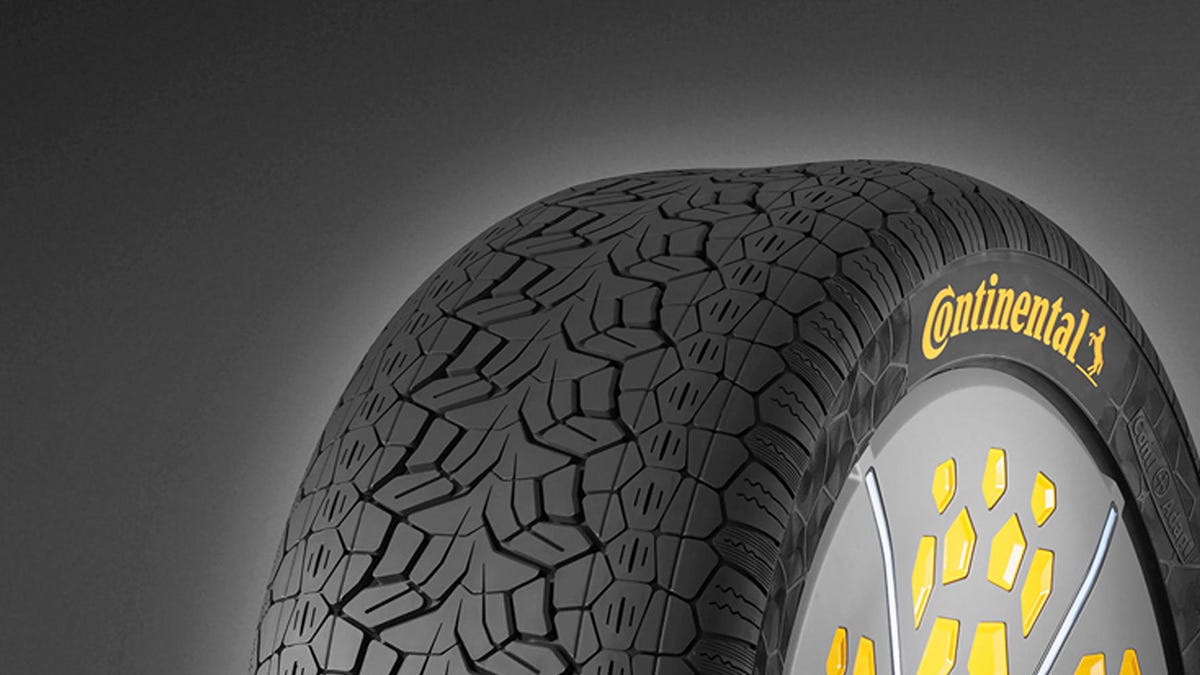Continental built a tire that can change pressure based on weather
No matter where you're driving, ContiAdapt can provide the proper contact patch.

Automakers aren't the only companies unveiling concepts at the Frankfurt Motor Show. Continental, a tire and parts supplier, was there, too, and its latest tire concept could improve traction without any additional effort on the driver's part.
ContiAdapt is a system that integrates small compressors into the wheel. It's capable of inflating or deflating the tires, which expands or reduces the tire's contact patch -- the amount of tire that actually touches the ground at any given point -- to suit different weather and driving conditions.
Stuck in some snow? Just deflate that bad boy a bit and work your way out of the spot.
Higher pressures mean smaller contact patches. This reduces rolling resistance and can increase efficiency on dry roads. Lower pressures mean larger contact patches, which can help with traction when off-roading or attempting to traverse slippery terrain.
Some cars have this type of system built in, but they're expensive and used in very niche products. The original Hummer, for example, had a tire inflation system built into the car (rather than the wheels) that could inflate or deflate tires at will. Mercedes-Benz has a similar system for its off-road vehicles, as well.
That wasn't Continental's only new concept at Frankfurt, either. The company also showed off ContiSense, which uses conductive rubber to send electrical signals to the car's computer from a sensor embedded in the tire. It's believed that the system can react to punctures and changes in tire pressure even faster than current tire pressure monitoring systems. The sensors could also detect changes in road conditions and warn the driver accordingly, whether via the infotainment system or a connected smart device.
Theoretically, Continental could combine both technologies to create a tire and wheel combination that could deflate or inflate based on whatever weather the tire's sensors pick up. That way, your all-season tires would truly be all-season tires, adapting to the changes in weather automatically.

